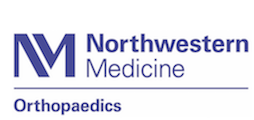|
|

|
« Back
I am on a mission to find some way to help my brother with his back pain. He's had it for six months and nothing is working. They don't even know what's causing it. He's tried massage, acupuncture, exercise, traction, and even supplements and hypnosis. Is there anyone out there who has a solution we are missing?
|
|
With over 200 different treatments available for back pain, researchers haven't come to an end of study on this problem. From the evidence we have so far, finding one simple treatment that works for everyone isn't likely.
Some of the more common treatments include heat, massage, ultrasound (another form of heat but also a mechanical means of improving circulation and healing), shock wave therapy (also known as vibrotherapy).
Most of these tools are used to increase blood circulation, improve soft tissue stretch, reduce pain and stiffness, and speed up healing. Other potential effects may include enhanced cellular metabolism, muscle relaxation, and increased trunk/spinal motion.
Studies comparing different treatments and combinations of approaches are often of poor or low quality.
It can be difficult making clear comparisons since every study had its own duration (e.g., treatment three times a week for three weeks; treatment daily, five times a week for three weeks; treatment once or twice a week for a total of four sessions, etc). And results or final outcomes are often measured using different tools (pain assessment, function, disability, walking distance, spinal motion, emotional functioning and coping).
What can we say from the studies that have been done? According to the results of a recent systematic review of all studies published, shock wave therapy and ultrasound should NOT be used to treat low back pain (acute, chronic, with or without leg pain). There is plenty of evidence to dispute the use of these modalities in the treatment of low back pain.
The use of lumbar traction and laser do not seem particularly effective either. The positive benefits reported by some patients may be nothing more than people getting better through the natural course of healing.
Some patients with chronic back pain (no leg pain) respond best to spinal manipulation. Research is ongoing to find predictive factors. Predictive factors help identify which patients will respond favorably to a particular treatment method or approach.
Most of today's experts in the field of back pain suggest a multidisciplinarian approach. This means the patient must pursue a trial-and-error method of finding the right mix of help from physicians, physical therapists, counselors, trainers, and alternative practitioners (e.g., hypnosis, Reiki, BodyTalk, naturopathic or homeopathic remedies, craniosacral therapy, etc).
|
References:
|
|
|
« Back
|
|
|
|
*Disclaimer:*The information contained herein is compiled from a variety of sources. It may not be complete or timely. It does not cover all diseases, physical conditions, ailments or treatments. The information should NOT be used in place of visit with your healthcare provider, nor should you disregard the advice of your health care provider because of any information you read in this topic. |
 | All content provided by eORTHOPOD® is a registered trademark of Mosaic Medical Group, L.L.C.. Content is the sole property of Mosaic Medical Group, LLC and used herein by permission. |
|
